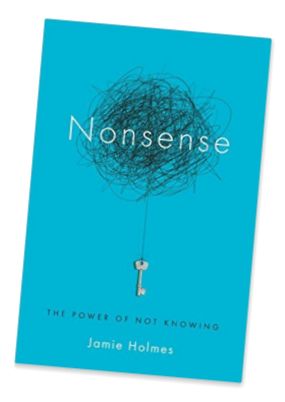I truly dislike negativity. I suspect you do, too.
As a kid, I would avoid arguments like the plague. I hated the upset that went along with it – that feeling of frustration, and churning in my stomach. Ugh.
As I got older, I realized that negativity was always going to be a part of my life whether I liked it or not. Avoiding it was not an option, because avoiding it meant I wasn’t sticking up for myself or my loved ones or the tenets I believed in. Avoiding it meant I couldn’t right a wrong – or learn and understand other points of view.
And then, perhaps the realization we all arrive at eventually: that not all negativity is created equal. There are degrees of problems and contention that arise in life, and therefore dealing with it also requires appropriate response. From cocking one’s head, to a full-blown argument. From a few choice words to a full blown lawsuit. And everything in between.
Over time, I’ve found that my most successful tool for dealing with contention is, simply, a gentle push back. This is true in both my personal life and in business. I think 99% of the contentious issues in my life have been solved more by a push back question or statement than they have by anything stronger than that…
And so, I always try the Push Back first – before I bring out the cannons.
What exactly do I mean by “Push Back?” Unlike some dictionary definitions which focus on “repelling the enemy” – my definition is simply to provide an alternative point of view – mine. But to provide it in a very definitive fashion, thereby helping the other person see the error of his or her ways.
Most of my push backs use the same process:
- I think about why the other person is invested in his idea
- I respond in a way that person will know that I have heard and considered his/her point of view
- then I ask a question that helps him/her understand my point of view and helps them see why I’m right (!)
- and finally, I ask for some buy-in from him/her.
An important note: while pushing back is a great way to handle negativity. It doesn’t always mean you’ll get your way, or that you ultimately will “win.” But it provides the best possibilities for a win – and even better, sometimes provides for win-win by all parties. And – you will ALWAYS learn something.
Last week I shared with you my latest health challenge (with appreciation to many of you who touched base with kind thoughts and good ideas!). This challenge has brought with it some excellent examples of how a gentle push back helps me get past negativity, and helps me get what I need or want.
Here’s an example that might help you with your advocacy work, too.
I needed a CT scan of this new lump I have developed which, to this point, has behaved so similarly to the lump that caused my misdiagnosis in 2004. When I got to the CT scan appointment, the tech did a good job of managing my expectations about the actual scanning procedure. But I wanted to know about the reading by the radiologist. Most importantly – I did NOT want the radiologist to see my records from 2004 because I didn’t want there to be any preconceived notions about what he was seeing on the 2013 scan.
So I asked the tech to send the scan images to the radiologist WITHOUT those prior records. He informed me that it would be impossible to do that because it was against their protocol. So I explained to him that I know protocols are important, so I could see his point of view. But then I explained why it was so important to me to do it my way. I then asked him, if it was HIS lump, and HIS scan, what would he want to happen? And could he see any way to meet his requirements but satisfy mine, too?
He had to think about it, and he certainly wasn’t happy with me, but then he said, “I see why that makes sense to you.” He assured me he would make sure the radiologist didn’t see the 2004 records.
I don’t know how he did it. And, truth be told, I can’t be sure he did. But when I got my copy of the results, I see that under “Clinical History” there is nothing mentioned about my prior lump. And the diagnosis is nothing at all like the other one was. (Can’t be sure it’s correct yet – but at least it’s not at all related to the misdiagnosis in 2004.)
Now – I could have been nasty and bitter and contentious with the CT tech – but I wasn’t. I was calm and and I made sure he knew that I had listened to him and his concerns. I think the real key to pushing back successfully is the acknowledgment of the other person’s point of view, then posing the question, and posing it in such a way that there is only one answer – mine!
This is a tool advocates can use on behalf of their clients every day. Further, it’s a great process to let your client observe as you work on their behalf. It’s a form of negotiation or mediation and is the best non-contentious way to solve a difference of opinion I know of.
I’m sure Conflict Resolution professionals have their own terms for this kind of thing – I hope they do! No matter what it’s called, if you don’t use it already, then try my push back process and see if you can find some win-win scenarios for your clients, too.
Learn more from this post: Does Your Provider’s Service Pass the Momma Test?
? ? ? ? ? ? LEARN MORE ? ? ? ? ? ?
FOR PATIENTS | FOR ADVOCATES | FOR POTENTIAL ADVOCATES
? ? ? ? ? ? ? ? ? ? ? ?




